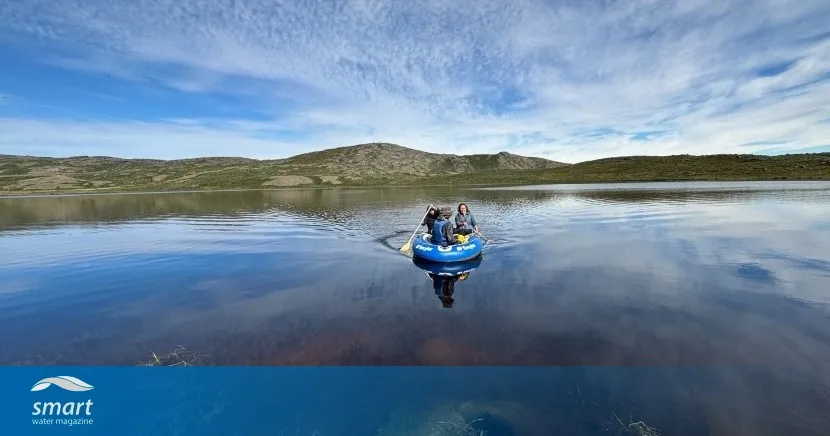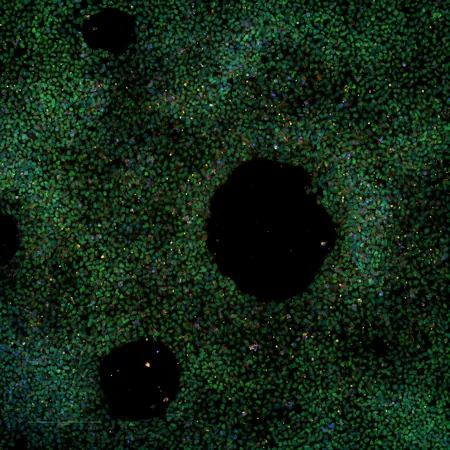
Climate Crisis Unleashes Alarm as Thousands of Greenland's Lakes Turn Toxic Overnight
2025-01-22
Author: Jia
Climate Crisis Unleashes Alarm as Thousands of Greenland's Lakes Turn Toxic Overnight
In a shocking revelation, a recent study has found that extreme climate conditions have wreaked havoc on thousands of lakes in West Greenland, critical to both drinking water and carbon sequestration. Following an unprecedented two months of record heat and precipitation in fall 2022, approximately 7,500 lakes underwent a rapid transformation, turning brown and starting to emit carbon dioxide, marking a stark decline in water quality.
Led by the renowned Fulbright Distinguished Arctic Scholar Jasmine Saros, who is also the Associate Director at the University of Maine Climate Change Institute, this alarming study outlined in the Proceedings of the National Academy of Sciences (PNAS) highlights how the combined impacts of climate extremes pushed these Arctic lakes "across a tipping point." Instead of gradual change, researchers observed a swift alteration in the physical, chemical, and biological properties of these lakes in less than a year—transformations that typically unfold over centuries.
West Greenland, generally known for its cold and snowy falls, was uncharacteristically hit with rain as temperatures soared. This unusual weather led to the thawing of permafrost—frozen soil that holds vast organic carbon reserves—resulting in a cascade of carbon, iron, magnesium, and other harmful elements being washed into the lakes, altering their appearance and function drastically.
According to Saros, the phenomenon observed in West Greenland is distinctively different from the slower deterioration seen in other Northern Hemisphere lakes, such as those in Maine. "The magnitude of this and the rate of change were unprecedented," she stated, revealing the urgency of the situation.
The influx of dissolved organic carbon from permafrost not only turns the lakes brown but also promotes bacterial growth, leading to undesirable tastes and odors in drinking water. More alarmingly, the newly released metals can pose serious health risks. Evaluating the type and quantity of these elements entering the lakes could empower local communities to improve their water treatment processes, as the increased organic material can create dangerous byproducts associated with carcinogenic compounds.
Moreover, the diminished light penetration resulting from increased lake opacity has disastrous implications for the biodiversity of plankton—crucial organisms in the aquatic ecosystem. An increase in carbon-digesting plankton, paired with a decrease in carbon-absorbing phytoplankton, means these once carbon-sequestering lakes have now become significant sources of carbon emissions, with an alarming 350% increase in their greenhouse gas output.
Researchers attributed these extreme weather events to a series of atmospheric rivers—long, narrow corridors of concentrated moisture from the ocean responsible for intense rainfall when they hit land. Experts predict that atmospheric rivers will become 50-290% more frequent in various regions, including Greenland, by the end of the century.
Saros and her team emphasize the need for further monitoring and research to understand potential recovery pathways for these lakes. With ongoing climate changes threatening aquatic environments globally, insights from this study could illuminate broader trends and recovery strategies for browning lakes worldwide.
"Our study exemplifies the power of long-term observation," Saros reflected. The team had been gathering extensive data through annual sampling and continual monitoring using remote sensors, allowing them to capture the profound effects of this climate disaster.
As the stakes grow ever higher, the urgent question remains: Can the lakes of West Greenland recover, and if so, how will different lakes respond to this climate upheaval? As researchers press on, the world watches anxiously. Will humanity act before it’s too late?




 Brasil (PT)
Brasil (PT)
 Canada (EN)
Canada (EN)
 Chile (ES)
Chile (ES)
 Česko (CS)
Česko (CS)
 대한민국 (KO)
대한민국 (KO)
 España (ES)
España (ES)
 France (FR)
France (FR)
 Hong Kong (EN)
Hong Kong (EN)
 Italia (IT)
Italia (IT)
 日本 (JA)
日本 (JA)
 Magyarország (HU)
Magyarország (HU)
 Norge (NO)
Norge (NO)
 Polska (PL)
Polska (PL)
 Schweiz (DE)
Schweiz (DE)
 Singapore (EN)
Singapore (EN)
 Sverige (SV)
Sverige (SV)
 Suomi (FI)
Suomi (FI)
 Türkiye (TR)
Türkiye (TR)
 الإمارات العربية المتحدة (AR)
الإمارات العربية المتحدة (AR)